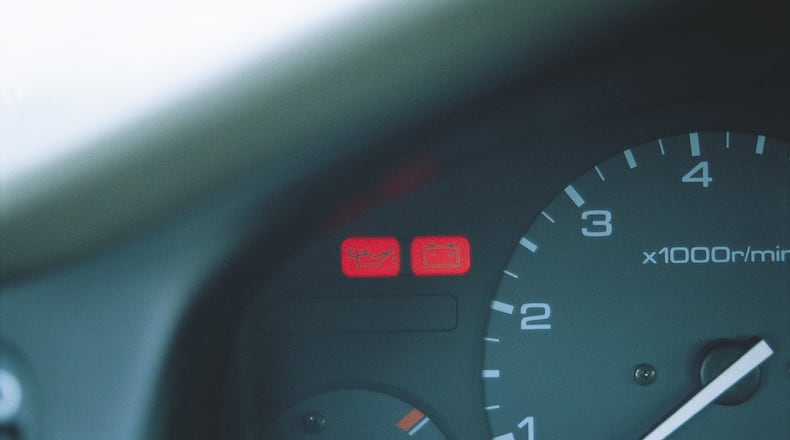An illuminated “check engine” light tells you that the engine control computer has detected a problem that may be causing the vehicle to produce excessive emissions. Sometimes the light will be accompanied by noticeable performance problems, such as an engine miss or hesitation, but other times the vehicle will appear to operate normally. Common failures that can trigger a check engine light include:
• Faulty signals from engine control components such as oxygen, coolant temperature, intake airflow and other sensors.
• Engine misfires from faulty spark plugs, plug wires, ignition components, fuel injectors or other fuel system components.
• Emission control device failures such as loose or cracked vacuum hoses, a loose or missing gas cap, or a defective exhaust gas recirculation valve.
How you should react to a “check engine” light depends on how the light behaves. If the light comes on for a little while and then goes out, there was a temporary problem in the system. Although the light goes out when the problem stops, the computer still stores a diagnostic trouble code in its memory. If the light does not recur, no action is necessary. However, if the light continues to come on and go off intermittently, take the car in for a checkup.
What to do
What to do when the check engine light comes on:
If the light turns on and off occasionally, there is an intermittent problem. No immediate action is necessary, although you may want to have your repair provider take a closer look the next time you take the car in for routine maintenance.
If the light comes on and stays on, there is a continuous problem that may also cause driveability issues and/or reduced fuel economy. Make sure the gas cap is tightly sealed; if the light goes out after a few days that was the problem. If the light remains on, schedule an appointment to take the car to your repair provider for diagnosis.
If the light flashes rapidly, there is a potentially serious problem that requires immediate attention to prevent costly catalytic converter damage. To the extent possible, reduce vehicle speed and load, and head for a repair facility. If the light continues to flash for more than a minute or so, shut off the engine and have the car towed to a shop for troubleshooting.
About the Author

